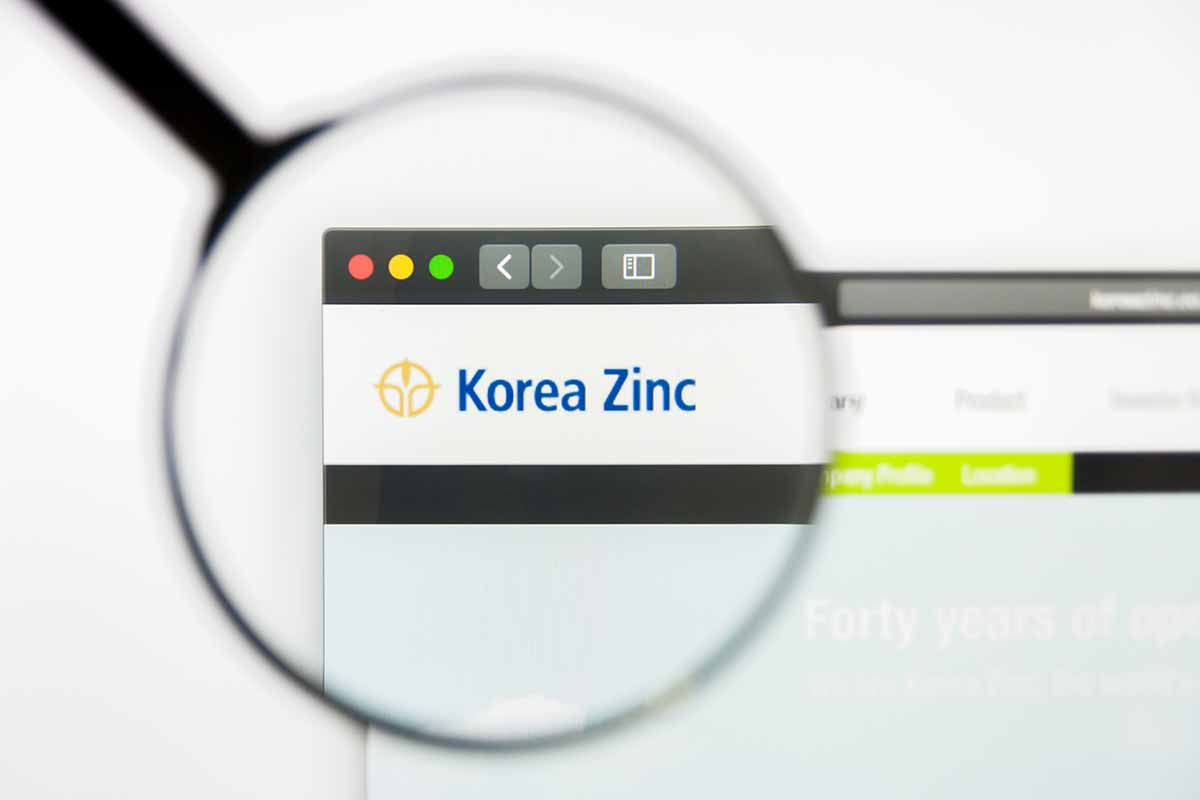
Korea Zinc’s deal creates a vertically integrated global e-scrap entity that will control material from collection all the way through to final smelting. | Pavel Kapysh/Shutterstock
Metals giant Korea Zinc is set to control e-scrap recycling and secondary processing operations in the U.S. and Europe, striking a $332 million deal to acquire a majority stake in Igneo Technologies.
Korea Zinc, a publicly traded company based in Seoul, on July 11 disclosed to investors a majority investment agreement with Igneo, which operates an e-scrap smelting facility in France and is building an $85 million smelter in Georgia.
The acquisition also includes the e-scrap feedstock arm of Ingeo, evTerra, which is planning to open several e-scrap recycling facilities across the U.S. by the end of this year.
The deal creates a vertically integrated global e-scrap entity that will control material from collection all the way through to final smelting.
Igneo CEO and President Danish Mir told E-Scrap News that Korea Zinc will own 73% of Igneo.
Igneo to continue to build its model
According to a press release, the capital investment and strategic support from Korea Zinc will allow Igneo to accelerate its growth strategy.
“The strategic partnership with Korea Zinc is an incredible milestone for Igneo,” Mir stated in the release. “Their world-class smelting and refining capabilities have made them a global leader in the production and recycling of critical metals.”
Mir said Igneo’s existing management team will stay intact after the acquisition to execute on the business plan it has developed.
“We will be looking to further expand our team to help facilitate our future growth plans,” Mir said.
Founded in 1974, Korea Zinc specializes in recovering precious and non-ferrous metals. The smelter operator tallied revenue of $8.3 billion last year and net income of $674 million, according to business research firm Dun & Bradstreet.
Korea ZInc’s refinery in Onsan, South Korea is already a downstream destination for printed circuit boards (PCBs) and CRT glass supplied by U.S. e-scrap companies. The company recycles more than a dozen types of metals from mobile phones, in addition to scrap batteries and electric arc furnace dust that’s created during steel production, according to its website.
Meanwhile, White Plains, N.Y.-based Igneo (formerly called WEEE Metallica) runs a secondary smelter in Isbergues, France, that has an in-feed capacity of 30,000 metric tons annually of e-scrap.
The company plans to open a similar plant at the Port of Savannah in early 2024. The copper concentrate produced by Igneo is sent to other smelters/refineries for further separation into pure metal fractions.
Recently, Igneo launched e-scrap processor evTerra with an eye to supplying a steady stream of PCBs to Igneo’s secondary smelter in Georgia. Led by industry veteran Jeff Gloyd, evTerra is using a shredding and separation system at its 100,000-square-foot plant in Atlanta. The processor is planning to open nearly identical plants in Nevada, Illinois and Texas by the end of the year.
The four plants will allow Igneo to shred and sort up to 140,000 metric tons of e-scrap a year.
Expanding global footprint
Korea Zinc has affiliated companies across Asia, Australia and the Americas, but the acquisition gives the company its first U.S. and European operations. In December, Korea Zinc launched a wholly owned U.S. subsidiary called Pedal Point, dedicated to helping the company become a “global integrated circular resource platform.”
“Tapping into Igneo’s robust capabilities to collect and process end-of-life electronics will allow Korea Zinc to upgrade its standing in secondary copper refining,” Yun B. Choi, vice chairman of Korea Zinc, stated in the release. “With Pedal Point now fully running, Korea Zinc will be delving into the wealth of such opportunities in North America and beyond to find partners across verticals with the goal of making metal refining more efficient, circular and sustainable.”
Mir said Igneo’s France and U.S. secondary smelters will have a combined input capacity for e-scrap and other precious metals-bearing materials of about 120,000 metric tons per year.
The combined output of the company’s sustainable copper concentrate will total about 60,000 metric tons per year. A percentage of that concentrate will be going to Korea Zinc’s facility in Onsan, he said.
According to Korea Zinc’s press release, the copper concentrate from Igneo will go to a Korea Zinc subsidary called KZAM, which manufactures copper foil for use in lithium batteries, including electric vehicle batteries. “The company intends to use Igneo Holdings’ e-waste supply chain to mitigate the risk of supplying copper foil raw materials, while also seeking to secure waste batteries for second order batteries,” according to the release, a translation of which was provided by Igneo.
For Igneo, the acquisition will bring Korea Zinc’s expertise in a multitude of metal processing areas to the company, allowing Igneo to “keep innovating and improving both its process and products,” Mir said.
Additionally, “their global footprint will allow us to scale and expand into new geographies rapidly,” he added.
Earlier this year, Korea Zinc announced a new push into recycling and alternative energy development, with huge investments in environmentally friendly power sources planned. A signatory to the global corporate renewable energy initiative RE100, Korea Zinc has committed to 100% clean energy usage by 2025.
More stories about metals
- Australian metals company rebrands, builds Texas plant
- Project brings rare earth recovery into e-scrap facility
- Company debuts battery-containing device shredder